Ronda
Andalusia is not only known for sun, beach, flamenco and red wine, but also for its beautiful capital Seville and the white villages in the mountains of Andalusia. Only 50 km north of the Costa del Sol lies Ronda, the most famous white village of Andalusia, embedded in a bizarre mountain landscape 'Serrania de Ronda'. - Ronda is a small town with just under 34,000 inhabitants. But it is one of the largest white villages in Andalusia. The Spaniards revere Ronda as their La Ciudad Soñada, their dreamed city, with its white house facades and the picturesque winding and narrow streets.
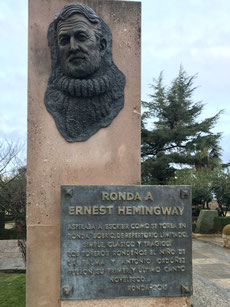
Writer
The beauty of Ronda has already impressed some famous people. In 1913 Rainer Maria Rilke wrote his Spanish trilogy in Ronda. Ernest Hemingway was here in 1923 and at the end of the 50s, he loved Ronda and especially the bullfight.
Ronda served Prosper Merimee as a model for his novella Carmen. In 1984, Bizet's opera Carmen was filmed there with Julia Migenes and Plácido Domingo.
Orson Welles, who spent a summer here as an 18-year-old, had his ashes buried here after his death. Ava Gardner lived in Ronda for some time after her divorce from Frank Sinatra.
In 1994 Madonna shot the video 'Take a bow' in Ronda's bullring.
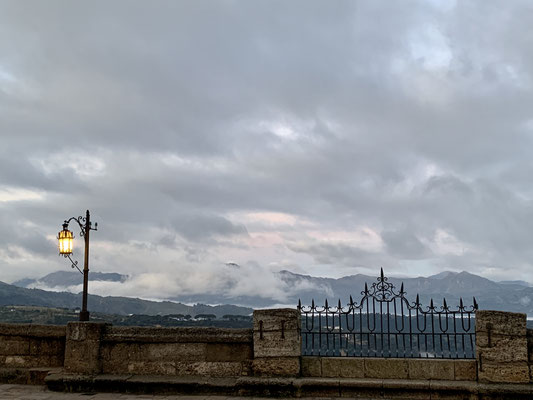
Directions
We have already heard so much about Ronda that we set off from Gibraltar. The A405 leads beautifully along the edge of the Parque Natural Los Alcornocales and then continues on the A369 through bizarre mountain landscapes past small white villages. On the way there is a lot to see, viewpoints, which are called Miradore, invite you to stop and take pictures of the fascinating nature. So plan a little more time for the route.
Ronda is easily accessible by car or camper. From Marbella you drive about an hour, from Malaga 90 minutes and from Seville and Granada 2 hours. For vacationers of the Costa del Sol there are day trips by bus to Ronda. If you are here without a vehicle and are not afraid of group tours, this is an alternative.
Parking
Parking in Ronda is good and cheap at the parking lot Parking Saba Estación Tren Ronda at the train station. This parking lot has no height restriction and costs € 0.80 per hour, which is very cheap for Ronda. The whole day costs under € 10. Other parking lots cost € 2,40 per hour.
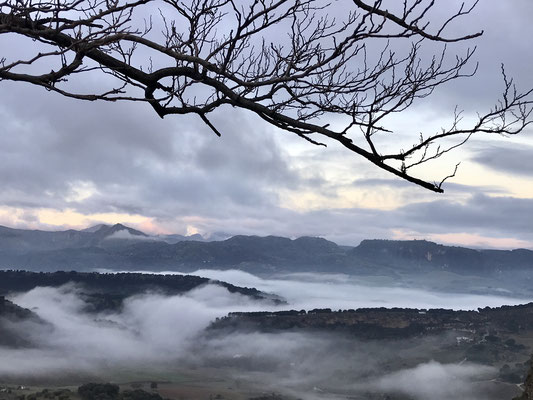
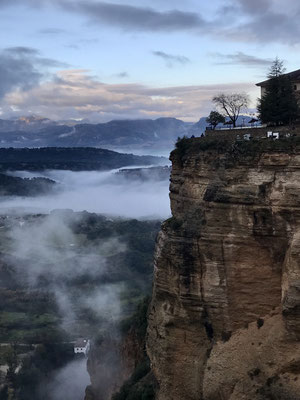
The origin of Ronda
Ronda was founded by the Romans on a rocky plateau 723m above the sea. Unfortunately, not much remains of the Romans today. The Moorish old town is called Ciudad Vieja, short La Ciudad. It is through a 80-100m deep gorge El Tajo de Ronda separated from the new town. Down in the gorge flows the Rio Guadalevín. There are 3 bridges over the El Tajo gorge.
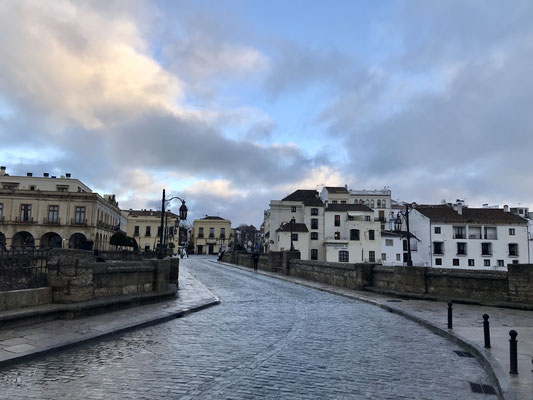
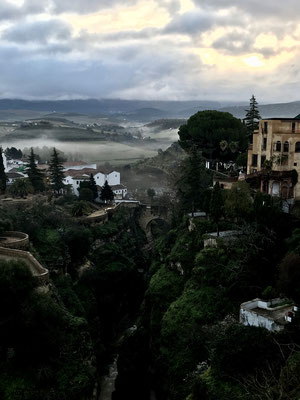
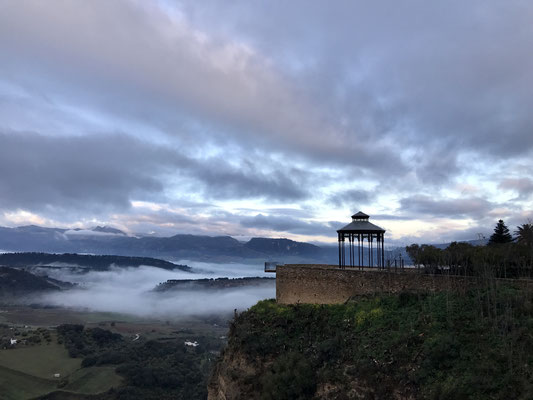
Sights
The most famous sight of Ronda, the Puente Nuevo, the new bridge, connects the two parts of the city. The Puente Nuevo was built from 1751 to 1802 by the Spanish architect José Martín de Aldehuela. So it was built over 50 years on this bridge. It is said that the architect was so enthusiastic about his bridge that he threw himself to his death after its completion, because he would never be able to build something so wonderful again. The only proof is that he died in the year of its completion. The best view of the bridge can be had by walking down a small dirt path from Plaza María Auxiliadora to the viewpoint.
Besides the Puente Nuevo, there is also the Puente Árabe ("Arab Bridge") and the Puente Viejo ("Old Bridge").
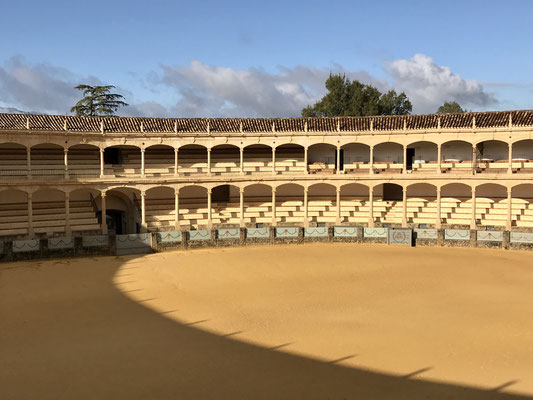
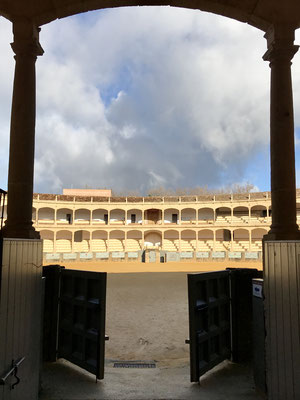
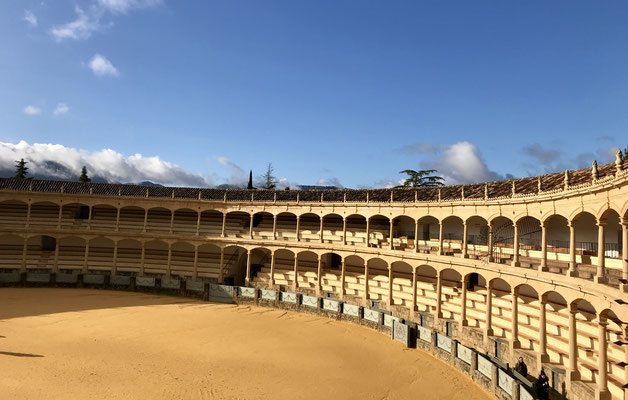
Ronda's bullring
Another highlight of Ronda is the legendary bullring Plaza de Toros. It was also built from 1779 - 1785 by the Spanish architect José Martín de Aldehuela, who also constructed the Puente Nuevo. It is the oldest and largest bullring in Spain, with a diameter of 66m, and holds 6,000 people. Its plain white exterior facade is typical of the late Spanish Baroque period. Although bullfighting is controversial in Spain and has been stopped in many places, bullfights still take place here in Ronda. This is because Ronda has a very long bullfighting tradition, the rules of bullfighting were developed here, known as Escuela Rondeña ("Ronda School"). The rules include the use of the cloth, the fight of the torero no longer on horseback but on foot, as well as style and poses.
Even if you are critical of bullfighting, the Plaza de Toros is worth a visit. For € 8, - entrance you can visit the entire bullring. It is conveyed in 2 modern, digital multimedia shows the history of the Plaza de Toros. With English subtitles. In addition, in the Tauromaquia Bullfighting Museum you can see the most famous bulls, matadors and toreros with their robes, including original posters. You can also take a look at the riding hall and the stables of the Real Maestranza, which are used today for dressage riding. A store sells tasteful souvenirs and a cafeteria offers refreshments.
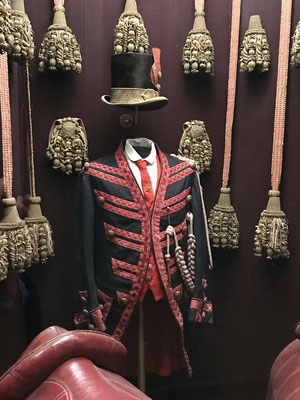



We would have liked to visit the Casa del Rey Moro, the "House of the Moorish King". This 14th century palace, which is part of the Spanish cultural heritage, was unfortunately closed for renovation. Via stairs cut into the rock - La Mina - you can climb down to the Tajo de Ronda. The hanging gardens didn't impress us that much, but that could be due to the hurricane that swept across Spain a few days before. Maybe they look better otherwise than, than now in January.
Also to be visited are the Baños Arabes ("Arab Baths) from the 13th century in the old Islamic quarter of Ronda, that is, in the San Miguel district. They are the best preserved baths in the entire Iberian Peninsula.

The most beautiful place in Ronda to relax is Plaza Duquesa de Parcent, with the City Hall and the Colegiata de Santa María la Mayor Monastery. The town hall was built in 1734 and used to be a military barracks. What is beautiful about this 3-story building are the two upper rows of arcades. What impresses me so much is that on the site of the monastery there was probably a Roman church, a Visigothic church and a large mosque before.
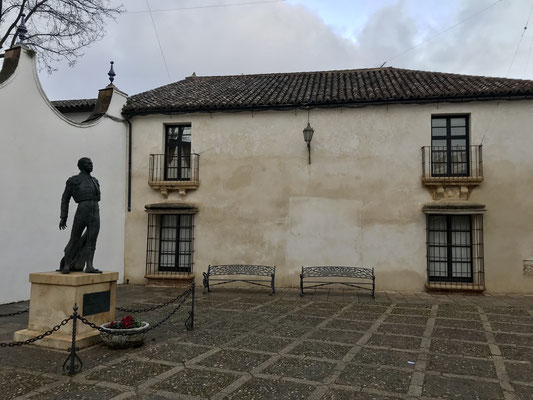



Camping site
Ronda is the third most visited city in Spain and we wanted to take beautiful photos there and film with the drone. Since we could guess that we are not the only ones with this desire, we wanted to start very early. To do this, we arrived one day before at the El Sur campsite in Ronda. Costs now in January € 23, - . Paid actually on departure, but be careful: you can leave in the morning from 8 o'clock the place, but the reception is occupied only from 9 o'clock. Therefore, pay rather in the evening, then you can leave earlier in the morning. Think in advance where you park and enter it into the navigation system, then the morning will be less stressful.
Mirador de Ronda
I was particularly impressed by the sensational view from the Mirador de Rondo in the morning. It was almost the highlight of Ronda for me. You have a great view of the old town and the fascinating mountains Serrania de Ronda. When the fog rises over the bridge in the morning and moves over the mountains, this view is one of the most beautiful I have ever seen. You can see the Sierra del Oreganal, the Sierra Blanqilla, the Sierra del Palo, the Sierra de Juan Diego, the Hacho de Montejaque and the Penon de Mures from here in good weather. Don't worry, you don't have to remember all that, it will be explained to you wonderfully on display boards on site.
And last, but not least: In the park Alameda del Tajo you will find a toilet for € 0,60 in the northwest corner, which is open from 10 am.
Realization of the day: If you want to experience Ronda stress-free, you have to get up early, because this unique scenery has many fans.

The tourists
We read before that many Asians visit Ronda. And yes, that is also the case. Other countries other customs. These Asians made me smile. - Have you ever seen how Asians take pictures? With what dedication they put themselves in the scene? How important a great photo is to them? How they jump, dance and leap? They choose the right outfit, for example a red dress with a wide swinging skirt in the bullring and kill the imaginary bull with an umbrella. That alone is a reason to go to Ronda. Do we Germans sometimes lack this liveliness and liveliness? Simply not being afraid to make an ass of ourselves? Or is that a privilege of the young? To play. Were we ever that clueless? - We don't know for sure.

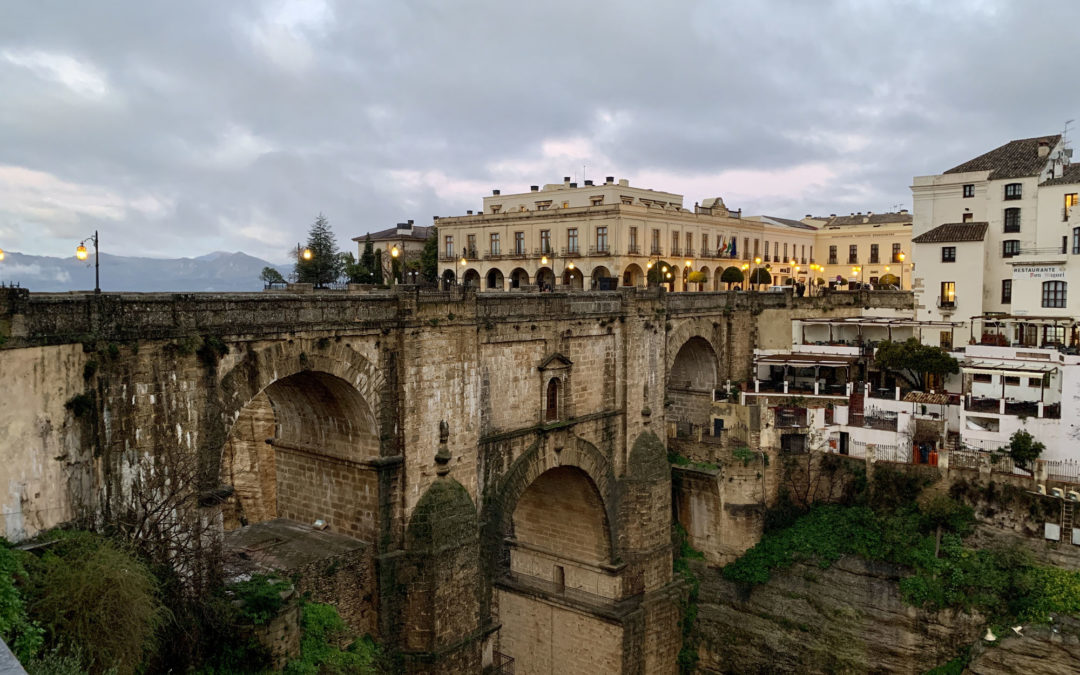
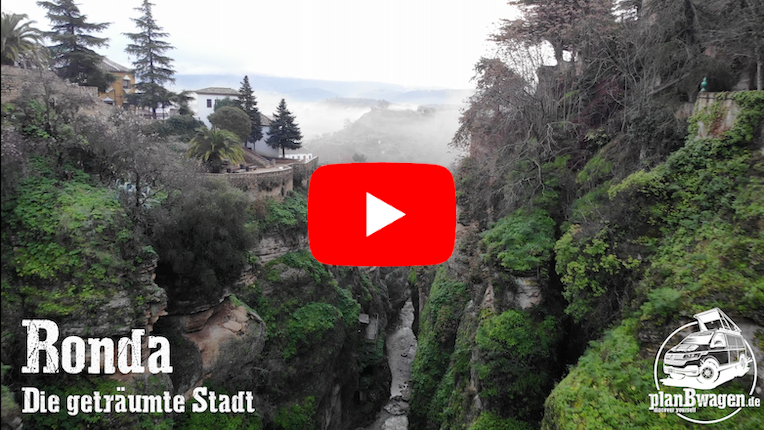
Thank you very much for the short useful tips for Ronda! They helped me a lot. We had only 4-5 hours for this beautiful city and had already 2 hours drive behind us also it was very hot, so unfortunately we could not see everything. But I kept to your info so we could move a little faster. Best regards. Nihayet
Hello
If you ronda with the camper a goes to the parking lot at the station, are the sights well within walking distance?
Thanks for a feedback.
Ronda is well laid out and easy to get around on foot.
Thank you very much for the great information and tips. You have made our trip to Ronda more interesting and especially more relaxed! 🙏
Ciao Steffi,
very nice. Therefore, another tip. There are some beautiful, white cities in the area, which are much less crowded. Ronda is exciting, but unfortunately also a bit crowded. Our pictures were all taken at sunrise. Since it is thank God, still a little more relaxed.
Welche Einschränkungen gibt es in Ronda hinsichtlich Drohnenflüge?
Ciao Rudi,
ich weiß dazu nichts genaues. Generell kann ich nur sagen, das der Süden Europas deutlich entspannter damit umgeht, als es in Deutschland der Fall ist.
Wir haben in den letzten Jahren bei etlichen Videos nur wenig Probleme oder Diskussionen gehabt.
Bezüglich Ronda muss man nur wissen, dass es ein absoluter Touristenspot ist. Falls Du also an Aufnahmen in der Stadt denkst, würde ich empfehlen, bereits bei Sonnenaufgang zu starten.
Somit gehst Du nicht nur Diskussionen aus dem Weg, sondern hast auch die Möglichkeit Bilder ohne Menschentrauben einfangen.
Kleiner ergänzender Tipp. Nördlich von Ronda gibt es weitere sehr schöne “Weiße Städte” die bei weitem nicht so überluafen sind.